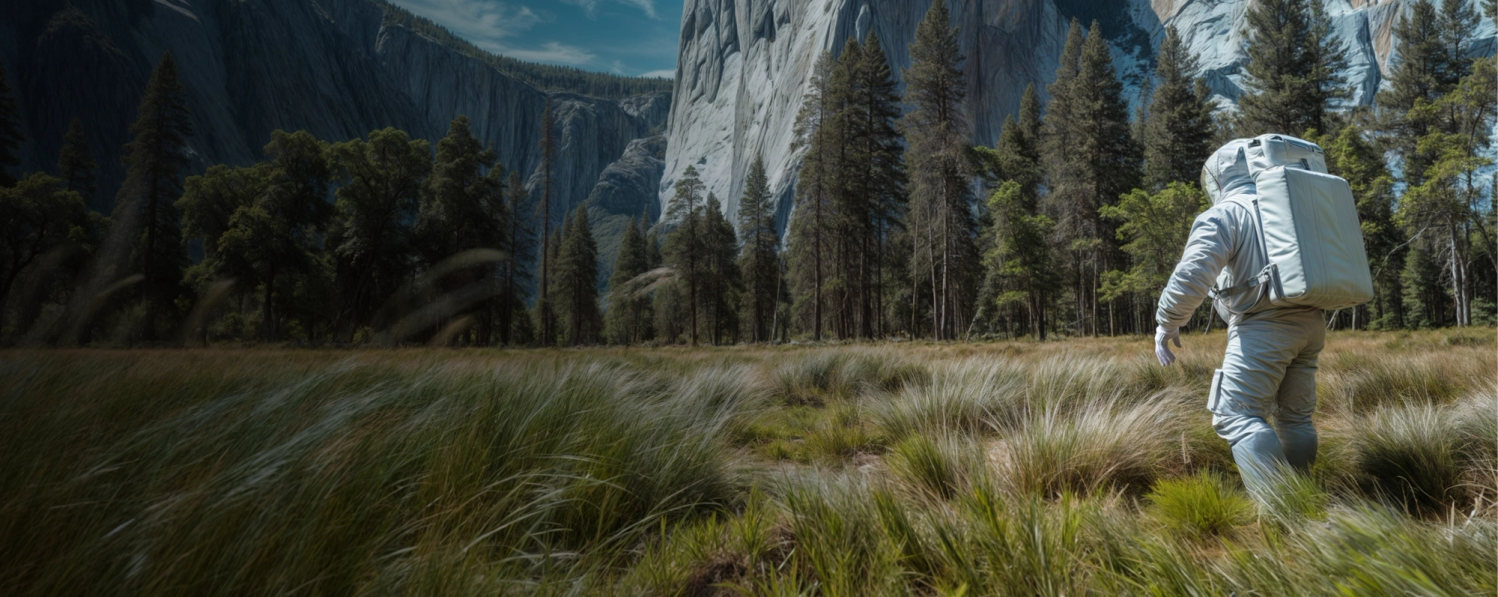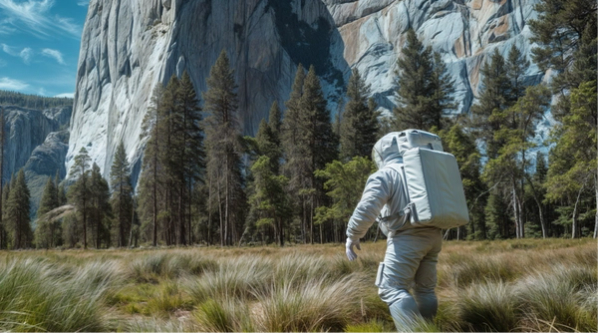Free Yourself From the Shackles of Inefficient Agencies and Freelancers

When you do something well, you'll be asked to do more of it. Overloaded in-house creative teams know this all too well. Outsourcing is a logical response, but traditional agencies and freelancers are only outdated partial solutions—square pegs in the round hole of digitally driven growth. There really hasn't been a better way—until now. It's called Creative-as-a-Service (CaaS), and Superside has shaped and set the standard for this nimble, subscription-based model.
The digital marketing landscape is constantly expanding and accelerating. Standing out requires a non-stop supply of high-impact creative.
While in-house marketing and creative teams have become incredibly adept at stemming the tide, gaps remain. In the face of ever-increasing workloads, shorter timelines and shrinking budgets, outsourcing is a given.
Traditional go-tos like agencies and freelancers simply aren't built to fully solve the creative challenges modern, digitally driven teams experience. Starved for options, many teams struggle needlessly to make do.
Thankfully, lean teams don't have to tolerate slim pickings any longer. There is a better way to outsource creative—where you're not tied to contracts or constraints and you can weather the ebbs and flows of constant change.
It's a flexible, subscription-based model called Creative-as-a-Service or CaaS for short.
Curious? Here’s what we’re going to cover:
Current Status—Overloaded
"We have an incredible design team that’s stretched for resources. Traditional agencies don’t have the capacity to do multiple iterations how and where you need. Having a CaaS model that allows for iterations really does change the game."

With 57% of global businesses now having in-house marketing and creative teams, in-housing is no longer a trend—it’s now the norm.
This shift underscores how marketing and creative capabilities aren’t just nice to have—they’re must-haves for driving growth.
Curious and ambitious marketers are always identifying new growth opportunities. This combined with projects from across the entire company means that resources are scarce and demand almost always exceeds supply.
A majority, 72% of internal creative teams can't keep up with the sheer volume of requests, 77% are pushed to the limits by shorter timelines and 82% say demands keep increasing.
If they try to do it all, they fail. The biggest cost, according to 2/3 of teams is strategy. Concepts get rushed, tensions rise and performance falters.
Optimization Only Gets You So Far
Templates can save time, but they don’t solve for every situation and, if you’re not careful, it’s easy for self-serve approaches to take creative off-brand. Tech stacks have changed the way we all work, but, again, automation only takes you so far. Even AI has its limitations.
More than a quarter of marketers and nearly one-third of designers say their creative teams lack the right skill sets needed to succeed in the face of mounting digital and competitive pressures. Hiring takes time, salaries are expensive and it’s nearly impossible to anticipate every need.
During strong economic periods, businesses can better absorb the risk of hiring employees. However, whenever there’s uncertainty, these costs are scrutinized even further.
Traditional Agencies and Freelancers Are Holding You Back
“It feels like a classic agency model is very siloed and they want you to fall in line with their plan rather than following yours.”

The world has changed. So has what's needed to continually fuel your creative pipeline. You don't have time to piece together partial solutions. It's the twenty-first century, not a quilting bee. There are serious flaws in these legacy outsourcing models that keep you from reaching your full creative potential and cause you to miss opportunities.
How Agencies Fail In-House Teams
Agencies shaped the rise of modern marketing and advertising. However, this was at a time when projects could be managed on a one-at-a-time basis, without changing course or adjusting priorities quickly.
Because most agencies have become more specialized over time, focusing on branding, interactive and a limited range of capabilities, they work well for projects with generous timelines and well-defined objectives right from the start.
Of course, most creative needs from growth-oriented businesses don’t fit this mold. And there are several other reasons why agencies are only partial solutions.
Ambitious brands not only sense this—nearly 40% are now seriously considering whether agencies are part of their future at all.
We had an amazing conversation with these powerhouse marketers and creatives about what made them feel shackled or constrained by traditional creative agencies.
Agency business models are rigid
First, you have to find and evaluate a list of agencies that fit your needs. Once you narrow this list down, there’s an extensive and time-consuming pitch process where the agencies attempt to prove to you why they should earn the work. Then, and only then, weeks later, once the contracts are signed, does the work even begin.
Whether you’ve signed a fixed contract for a retainer or agreed to a project-based relationship, once you’ve established the parameters, there’s little room for change. Or, if there are too many changes, extra fees are applied.
In our own informal survey, the inability to make changes was the top agency pain point cited by more than one-third of respondents.
Agencies only take on larger, more complex creative projects
In addition to highly specialized skill sets, agency pricing structures, which work on margins, make it cost-prohibitive for them to work on anything but large complex projects.
So, when internal marketing and creative teams turn to agencies as outsourced creative solutions, smaller, less complex projects stay in-house, weakening skills, morale and engagement.
Agencies aren’t iterative
Unless an agency partner has services designed for performance campaigns on social media, search engines and other digital platforms, they won’t have the bandwidth to continually concept, test and version creative quickly and easily.
Agencies rely on geographically localized talent
For example, if you work with an agency based out of New York City, most of the talent will also be from New York. This works if you’re following a set timeline and only require a certain key capability, but not if you need a wide range of creative capabilities, quick turnarounds and the ability to change course whenever needed.
Agency pricing isn’t transparent
Pricing transparency refers to the ability to clearly identify the business costs upfront. Chances are, you won’t find a pricing page on an agency website because the answer is usually, “It depends.”
This also ties back to the process of pitching a job. Each time an agency wins a piece of business, they know it’s only one piece of the business. Therefore, agencies have to price the amount of time and resources they’ll invest and allow for markup to ensure profitability.
It doesn’t take too many detective skills to uncover that this model clearly benefits the agency more than the client.
The Limitations of Freelancers and Freelance Marketplaces
We’ve all had exceptional, go-to freelancers and the explosion of freelance marketplaces underscores their use case.
Although freelance marketplaces aim to make it easier for businesses to connect with freelancers, they only solve the problem of sourcing. They don’t provide project management or any added continuity.
Higher-tier marketplaces will provide quality guarantees, but this relates to overall performance. Onboarding, routine communication and feedback loops remain the client’s responsibility.
Not to mention, the commission fees for accessing these networks negate the traditional cost savings associated with freelancers.
Whether you find your own freelancers or use a marketplace, freelancers are still teams of one, making them ideal for filling individual skills gaps—but not for accelerating your entire design pipeline from start to finish. Here are a few more reasons why:
Freelancers are highly specialized
Where agencies are specialists, freelancers are artisans. The word freelancer originates from the concept of lances (swords) for hire. Since freelancers are individuals, their competitive advantage comes from concentrating on one or two core competencies.
For instance, you’ll rarely find an illustrator who’s also an expert in video production or a video producer who’s also a graphic designer.
Freelancers have fixed amounts of capacity
As humans who also need to eat, sleep and take breaks, freelancers only have 24 hours each day and they can’t spend all of them working. The moment a freelancer absorbs some of your workload, the amount of room they have left on their place also decreases—and the only way to increase capacity is to find more freelancers and expand your search beyond your local timezone.
Freelancers can either iterate or concept—but not both
They can’t do both at the same time. If they’re busy versioning assets, they won’t have the space to develop concepts or vice versa. Or, you’ll have to hire one freelancer to concept and another to iterate.
Freelancer rates vary a lot
Freelancer costs differ depending on where they live, their level of experience and the services they offer, which can make planning and estimating costs a bit of a minefield. Even when you sign a retainer, it’s often based on the freelancer’s hourly rate.
Only Creative-as-a-Service (CaaS) Sets You Free
"We had gone through a couple of different resources previously to try and come up with a website that we thought could carry us throughout this entire business opportunity. But they weren’t built for speed or scale and we wound up hiring Superside.”

CaaS is the best way for marketing and creative teams, or really any team, to get high-quality design and creative done quickly and consistently all while reducing costs and boosting efficiency.
It was created when it became evident that existing outsourced creative models simply couldn’t meet the needs of the digital era.
The Secret Sauce of CaaS
CaaS solutions have three main components: a remote workforce, integrated online technologies and subscription pricing. Here’s how all of the pieces of this multifaceted resource came together:
- Creative talent is not bound by geography. A CaaS model hires the best designers wherever they live.
- Simple, yet powerful creative, software serves as the canvas for these artists, and collaborative online tools enable frictionless project and asset management.
- Subscription pricing, first pioneered by Software-as-a-Service (SaaS) companies, lets businesses access the versatile range of capabilities they need paired with the predictable costs they also require.
More nimble than agencies or freelancers
Bypassing the black holes of inefficiencies, CaaS frees you from massive time and resource vacuums—so you can break through design barriers and fuel growth.
CaaS is agile and always-on
Rather than solving skill gaps project-by-project or one-by-one, CaaS offers a full range of creative services provided by a fully distributed talent pool that gives you the versatility to access a range of expertise across multiple timezones. With CaaS, you aren't limited to a regional talent base. Instead, you have access to a diverse and global perspective that lets you explore new ideas and keep production moving 'round the clock.
CaaS is flexible and adaptable
Internal teams have to be strategic about what they outsource. At the same time, every business has different and changing needs.
One team might need to develop a visual identity system and corresponding brand guidelines. Another team wants to scale video and the sales team needs a pitch deck.
CaaS meets the needs of one or many teams—letting you complete a range of creative projects large or small, simple or complex, strategic or production driven—instead of having to pick one or the other.
You can run several projects at the same time, pause one project and prioritize the other or use several capabilities one month and different ones another—the choice is up to you.
CaaS is fast and iterative
Effective performance and growth campaigns rely on continually refreshed creative. There are opportunities that must be seized quickly and you have to put a rush on them.
CaaS is uniquely elastic in this manner. It's the only outsourcing model that lets you fully operationalize creative execution and action a range of needs time after time, including quick turnarounds, whether planned or unplanned.
CaaS is cost-effective
Like Software-as-a-Service (SaaS), CaaS is a subscription-based outsourcing model designed with the customer in mind. It lets you choose the plan that fits your needs best so you'll know exactly how many hours you have available each month and which creative capabilities you'll be using. Instead of being confined to a rigid contract, you have the freedom of predictable costs, no surprise overruns and the ability to adapt your plan whenever you need.
CaaS delivers high-performing creative to dominate your space
In the highly competitive battle for space in your audience's hearts and minds, CaaS is like a space station or mother ship. It gives you the power to create a dominant presence, sending out ships, astronauts, satellites and more to explore and define new frontiers.
The Superside Mission—Welcome to a World of Barrier-Free Design
“Working with Superside has helped our team execute great work at scale. The onboarding was seamless and they very quickly felt like an extension of our own teams. Superside challenged our thinking and pushed for the best creative outcome that ultimately drove business results.”

The first to coin the term Creative-as-a-Service, Superside is purpose-built to scale design and fuel growth. Our business model has been carefully developed to be an all-in-one outsourcing solution for enterprising businesses focused on seizing growth opportunities.
Boston Consulting Group, Amazon, Google, Meta, Red Bull, Salesforce, Shopify and hundreds of other powerhouses have partnered with us to scale advertising creative, brand design, video production and more.
What sets Superside apart
Superside didn’t set out to create just another CaaS solution, our singular focus is to be the best CaaS solution for scaling creative and fueling growth.
Our carefully selected remote workforce, representing the highest levels of creative expertise and spanning 70 countries and counting, proves that talent truly has no borders.
Our continuously evolving and comprehensive range of creative capabilities not only reflects the current needs of our customers, it anticipates the future.
When we realized that our customers didn’t want to waste time managing sourcing talent, we developed dedicated creative management teams to make the entire process as turnkey as possible.
Knowing that time is of the essence in getting the compelling creative you need, all of our plans include bandwidth (up to 50% of your hours) for fast turnarounds in as little as 12 to 24 hours.
The result is a highly efficient model with an impressive 95% utilization rate and costs per asset that are nearly half the price of advertising agencies. (We were going to do a comparison of freelance rates, but the freelancer was on vacation.)
If this got you thinking, consider how agencies match up against CaaS with this scorecard.
Michelle enjoys learning from and empowering ambitious marketers and creatives focused on scaling design and fueling growth.🚀 With more than two decades of experience, she’s worked at both agencies and in-house teams at companies of all sizes in the United States and Canada. She began her career as an advertising copywriter, remastering these skills as a content marketer and becoming a subject matter expert on everything from frozen pies and financial statements to SaaS and now CaaS. Connect with her on LinkedIn.












